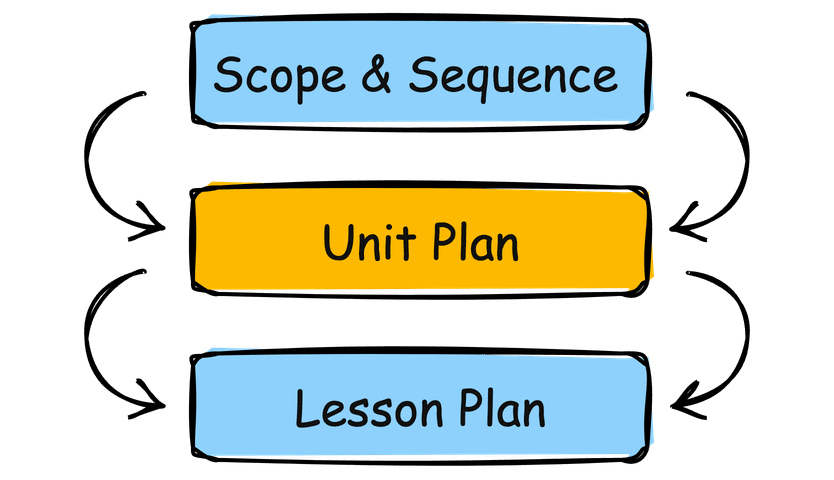Unit planning is a crucial aspect of teaching that allows educators to organize and deliver cohesive and comprehensive learning experiences. Whether you’re a new teacher or an experienced educator, effective unit planning can enhance student engagement, promote deeper understanding, and align instruction with learning goals. In this article, we’ll explore the importance of unit plans, key components to include, and strategies for creating meaningful unit plans for different stages of your teaching career.

Why Unit Plans Matter
Unit plans provide a broader framework for a series of lessons, ensuring that learning objectives are met over an extended period. They help teachers:
- Promote Coherence: Unit plans ensure that lessons are interconnected and build upon each other, providing students with a holistic understanding of a topic or concept.
- Focus on Learning Goals: By outlining clear learning objectives, unit plans keep instruction aligned with curriculum standards and essential skills.
- Enhance Engagement: Well-structured units incorporate diverse teaching strategies, activities, and assessments that cater to varied learning styles.
- Guide Assessment: Unit plans help educators develop assessments that accurately measure student progress and mastery of key concepts.
Components of an Effective Unit Plan
- Unit Overview: Provide a concise summary of the unit’s theme, learning objectives, and the scope of content to be covered.
- Learning Objectives: Clearly define what students should know, understand, and be able to do by the end of the unit.
- Assessment Strategies: Outline formative and summative assessments that align with the unit’s objectives and allow you to gauge student progress.
- Learning Activities: Describe engaging and varied activities that support the learning objectives, such as discussions, projects, hands-on tasks, and technology integration.
- Resources and Materials: List the materials, textbooks, technology tools, and resources required for the unit.
- Differentiation Strategies: Explain how you’ll tailor instruction to accommodate diverse student needs, including gifted learners and those requiring additional support.
- Timetable: Break down the unit into lessons, allocating time for each activity and assessment. Flexibility is essential, but a tentative schedule helps with pacing.
- Reflection and Adaptation: Dedicate a section to reflect on what worked well and what could be improved after teaching the unit. Use this insight to enhance future planning.
Creating Unit Plans at Different Career Stages
- Early-Career Teachers: Focus on clear learning objectives, engaging activities, and effective assessment strategies. Seek mentorship to refine your planning skills.
- Mid-Career Teachers: Incorporate innovative teaching methods, technology integration, and interdisciplinary connections to deepen student understanding.
- Experienced Teachers: Use your expertise to design in-depth, inquiry-based units that encourage critical thinking, problem-solving, and student autonomy.
Sample Unit Plan Formats
- New Teacher Sample Unit Plan: Download here to access a unit plan example tailored for early-career educators.
- Experienced Teacher Sample Unit Plan: Download here to access a unit plan example designed for experienced teachers.
Remember, effective unit planning is an ongoing process. Regularly assess the impact of your unit plans on student learning and adjust them as needed. Unit planning not only benefits your students but also enhances your teaching practice and helps you showcase your instructional design skills in professional portfolios and job interviews.
Frequently Asked Questions About Unit Planning
- What is a unit plan, and why do I need it?
A unit plan is a comprehensive outline for a series of lessons that make up a broader instructional unit. It ensures that learning goals are met, instruction is coherent, and assessment is aligned. - What should a unit plan include?
A unit plan should have an overview, learning objectives, assessment strategies, learning activities, resources, differentiation methods, timetable, and a reflection section. - How can unit plans enhance student engagement?
By incorporating varied activities, technology, real-world applications, and interdisciplinary connections, unit plans can engage students through diverse learning experiences. - How can I differentiate instruction in my unit plan?
Incorporate strategies such as flexible grouping, varied content delivery, alternative assessment methods, and scaffolded activities to meet the needs of diverse learners. - Can I adapt the same unit plan format throughout my teaching career?
Yes, while the depth and complexity may vary, the core components of a unit plan remain consistent. Adapt your approach based on your experience and students’ needs. - How can I make my unit plan more effective for interdisciplinary teaching?
Integrate content from multiple subjects, encourage connections between disciplines, and collaborate with colleagues from other subjects to create a rich, interdisciplinary learning experience. - Why is reflection important in unit planning?
Reflection helps you evaluate the effectiveness of your unit plan, identify areas for improvement, and make data-driven adjustments to enhance future instruction. - Can I share my unit plans with colleagues?
Sharing unit plans fosters collaboration and allows colleagues to provide feedback, suggest improvements, and align instruction across grade levels or subjects. - Are unit plans useful for job interviews or professional portfolios?
Yes, showcasing well-structured unit plans demonstrates your instructional design skills, your understanding of curriculum alignment, and your commitment to effective teaching practices.





